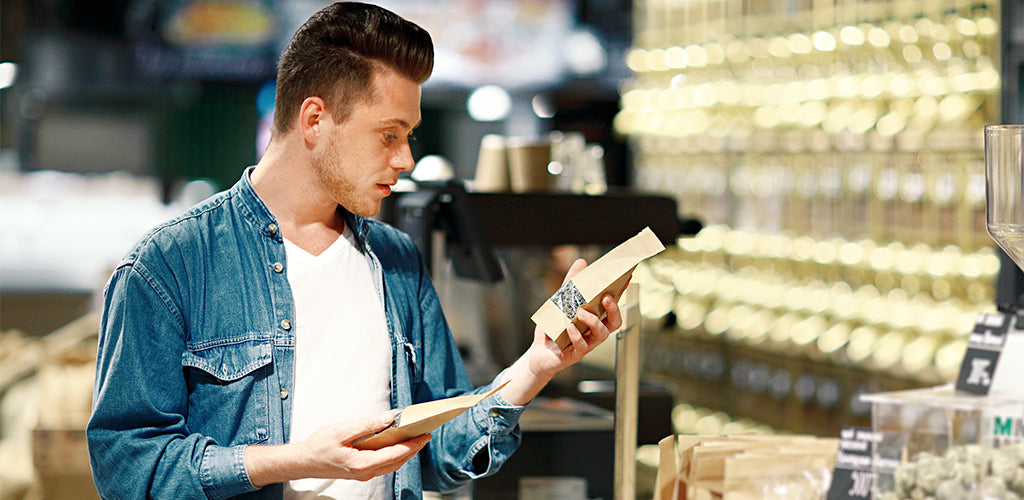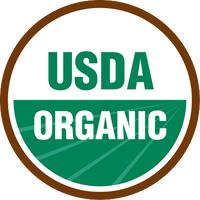Everything you need to know about labelling your tea

How can you create a label that’s both eye-catching and informative? Start by getting to know your customer and Australia’s food laws.
We wholesale tea to both large and small businesses, and there’s one thing they all have in common – the quest to develop the perfect label for their tea brand.
And it’s important to get this right, because even though the saying goes that you shouldn’t judge a book (or in this case, a box of tea) by its cover, that’s exactly what your customers are doing. You could have the best tea in the world, but if your label isn’t appealing, you are missing out on sales.
So how do you get it right? Once you have all your essential product information (weight, ingredients, etc.), you need to develop a label that’s compelling to your customers.
These are the top areas we recommend focusing on when developing your label; a list we have compiled after having weekly discussions with businesses ranging from large-scale brands to private labels and start-ups.
Like many things involved in running a business, once you start this process, you will find that it’s nowhere near as overwhelming as you first thought. And once the first label is done, then it’s simply a matter of rinsing and repeating for other products. As well as using these resources as references, look at the labels of other brands to see how established companies approach labelling.
1. Comply with Australian food labelling regulations
Food labels contain a deceptively large amount of information – much of which must comply with our Australian regulations. All of the regulatory details you need to know for your tea brand can be found within the Australia New Zealand Food Standards Code.
Examples of information you must provide on your label include:
- Ingredients
- Country of origin
- Weight
- Best before date
At the time of writing, tea, herbs and spices do not need a nutrition information panel (NIP), as they are deemed to ‘have no significant nutritional value’. However if you are creating blends, tisanes and flavoured teas that do have nutritional value, it may be worth creating one.
Additionally, teas do not generally require percentage listings of ingredients. That is unless you are creating something such as ‘turmeric tea’, for example, in which case you may be required to list the amount of turmeric in the product.
Before you dive into the code, we recommend starting with this product labelling guide developed by the Australian Government. It’s far easier to understand as a starting point and has a number of useful links, including country of origin laws and Australian-made claims.
Making health claims
Many tea drinkers are motivated by their wellbeing, so it’s only natural that you will want to outline health claims on your label. After all, these statements can make all the difference between the appeal of your product over a competitor’s. As a consumer, would you prefer to drink a ginger tea, or an immune-boosting ginger tea?
Before printing these claims on your labels, see Food Standards Australia New Zealand’s guides to ensure you are compliant. You should also cross-check with Therapeutic Goods Administration (TGA) if you are developing functional or medicinal teas and making specific health claims.
Where you are making health claims, you can also consider including disclaimer statements such as “may assist with …” and “Always consult your healthcare professional" on your label. And don’t forget that your label isn’t the only place where you can discuss the health benefits of tea.
Your website, blog, in-store team and social media are all places where you can promote the many benefits of your product – so if you’re in doubt about what you can and can’t say on your packaging, use your label to direct customers online.
Making organic claims
What you can put on your label depends upon the organic claim you are making; for example, is your product certified organic, or made using organic ingredients?
If you are claiming that your product is certified organic, you need to follow the rules of a certifying body such as Australian Certified Organic (ACO).
Alternatively, there are three other options:
- You can claim to have an organic tea if at least 95% of the ingredients are organic (and this can be proven with a supplier’s certificate)
- You can claim that a tea is 100% organic if all of the ingredients are organic (and this can be proven with a supplier’s certificate)
- When making a claim that your tea is ‘made using organic ingredients’, highlight the organic ingredients in the ingredients list (for example: organic green tea, mango fruit, organic coconut, natural peach flavouring)
These claims are regulated by ACCC and making a false claim is against the law, so do have a thorough understanding of where your product fits into the organic matrix.
For more information, refer to:
2. Inspire your customers
Once you have the nitty gritty sorted, it’s time to turn your attention to the fun side of your products. When a customer is looking at a product, they want to be excited to purchase it.
Ways you can stand apart include:
- Developing visually appealing labels
- Outlining serving ideas (for example, can the tea be served iced?)
- Providing brewing instructions
- Including a clear panel in your packaging so customers can see the tea
- Describing the flavour and aroma of the tea
- Suggesting the best time of day to serve the tea (e.g. breakfast, after a meal, etc.)
The gourmet segment of the food and beverage market in Australia is exploding, and the inclusion of these elements in your packaging helps to create the feel of a premium brand.
If you’ve visited the tea aisle of the supermarket recently, you will have noticed that even established brands like Lipton are bringing out premium ranges to capture this segment of the market. To understand why this is happening and what else is motivating tea drinkers right now, see this guide of the latest tea trends in Australia.
3. Use common language to describe your product
When it comes to creating a label, it’s easy to get carried away with overly descriptive language. But remember that shoppers are often in a rush and they’re looking for phrases they are already familiar with.
Terms that consumers easily recognise include:
- Organic
- Natural
- Herbal
- Fair Trade
- No artificial flavours
- Made in Australia
- Caffeine-free
- Naturopath-approved
- Vegan
- Non-GMO
- Pesticide-free
- Preservative-free
Ensure these statements are clear and easy to find on your label. The Made in Australia, Fair Trade and certified organic logos are another simple way to communicate this information.
4. Use a graphic designer who specialises in packaging
We also recommend looking for a designer who has experience in packaging design, as they will have an innate understanding of how to effectively place information. When working with your designer, be mindful that all information needs to be legible and easy for customers to read.
Your designer should also be able to suggest reliable companies for printing. Companies we have successfully worked with in the past include Pouch Direct, Vivo Packaging and AA Printing.
For all the tips and tea trends we pick up through our global network, subscribe at the bottom of this page for fortnightly updates.
*Note – The information in this blog is correct at the time of writing, however you should not take this information as your own legal advice. Please use the resources recommended in this article to find the latest legal information and consult with a qualified lawyer.
- Lucas Ruzicka








Comments 0